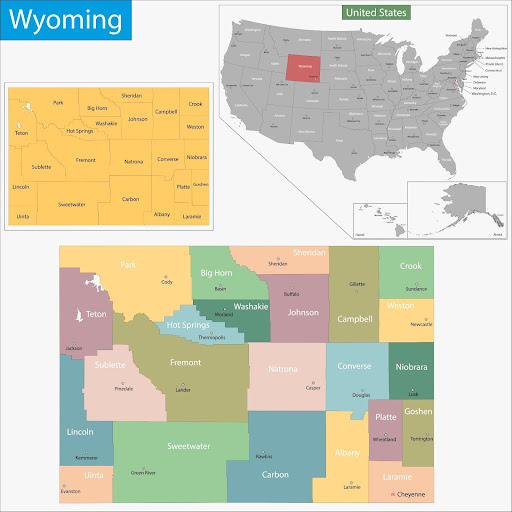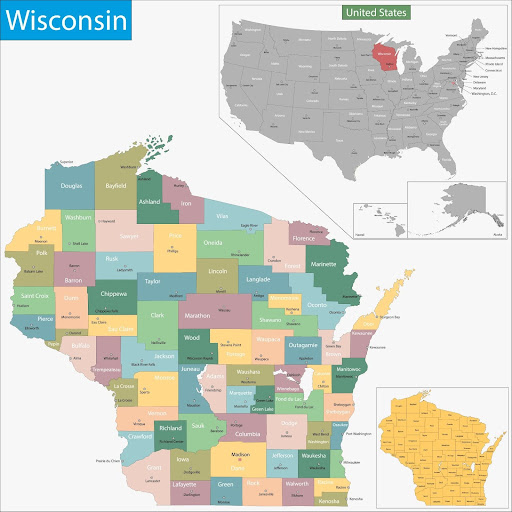Table of Contents
Nebraska might not grab headlines like California or Montana, but for fire investigators, it’s no less demanding. With over 97% of land privately owned and vast rural stretches of tallgrass prairie, canyons, and sandhills, fires here can evolve quickly, especially under high winds. And when they do, you're often working with small-town VFDs, ag-heavy jurisdictions, and terrain that doesn’t give up answers easily.
This guide on wildland fire resources in Nebraska breaks down the key players, fire zones, training options, and investigative context you’ll need to stay sharp and effective in Nebraska.
If you want the broader frame, our wildland firefighting resources deliver it.
Live Incident Updates & Maps
Fire activity can shift rapidly in Nebraska, especially with wind and low humidity in the Panhandle. Keep this live tool bookmarked:
State Overview
Nebraska is a wind-swept state with two distinct fire environments:
- Western Nebraska (Panhandle, Sandhills): Sparse population, grassy fuels, and rugged topography. This region sees the highest wildfire frequency. High winds and low RH drive rapid spread, and suppression is often limited by distance and access.
- Eastern & Central Plains: Agricultural lands dominate. Fires often start from equipment, controlled burns, or rail lines. Terrain is flatter, but fuel continuity (crop stubble, roadside grass) creates long-run fire potential.
- Niobrara River Valley and Pine Ridge: The closest Nebraska comes to a forested fire regime. This region includes ponderosa pine, mixed hardwoods, and steep terrain, especially around Chadron.
Wildfire Season Timeline
Nebraska’s fire season can ignite in unexpected bursts, depending heavily on wind, humidity, and local burn activity:
- Late Winter to Spring (February–April): The most active period. Dead vegetation and high winds spark fast-moving grassfires. Many are human-caused—debris burns, ag equipment, or fireworks.
- Summer (July–August): Lightning ignitions increase in the western regions, particularly near the Black Hills border. Agriculture-related fires (combines, hay stacks) also rise during harvest prep.
- Fall (September–November): A secondary spike in activity as fields dry out and fuel moisture drops. Dry cold fronts and frontal wind shifts create volatile conditions.
Key State Agencies Involved
Fire in Nebraska is a shared responsibility—public and private land boundaries are often blurred, so early coordination is key.
- Nebraska Forest Service (NFS): The state’s primary wildland fire agency. NFS provides suppression support, Red Card training, and incident investigation resources. Investigators often work with Fire Program Managers and regional fire coordinators.
- Nebraska Emergency Management Agency (NEMA): Oversees emergency declarations and inter-county resource coordination.
- Nebraska State Fire Marshal (NSFM): Investigates arson and suspicious ignitions. Leads on structure-related wildfire cases and offers technical guidance on cause and origin.
- Local Fire Departments: With more than 450 departments, most of which are volunteer-run, the first response is highly decentralized. Investigators often liaise directly with the local fire chief or county sheriff.
- BLM Eastern Montana/Dakotas Office: Oversees isolated federal parcels along Nebraska’s northwestern border.
Local Wildland Firefighting Resources
Nebraska’s initial attack muscle comes from its rural backbone: VFDs, mutual aid pacts, and a small number of state-managed engines.
List of Local/State/Federal Fire Response Agencies
Expect to work with a wide range of responders, depending on location and incident scale:
- Nebraska Forest Service Regional Fire Coordinators: These coordinators are the NFS’s field-based liaisons, responsible for wildfire preparedness, response coordination, and suppression support across assigned zones. Investigators often work alongside them during cause determination, especially on state-managed lands or during major incidents requiring mutual aid.
- Nebraska State Fire Marshal Investigators: The State Fire Marshal’s investigation unit handles arson, criminal negligence, and suspicious origin fires statewide. They’re often called in when a wildland incident intersects with a structure fire, suspected criminal activity, or requires forensic analysis beyond the scope of initial responders.
- Local VFDs: VFDs are the backbone of Nebraska’s initial attack and scene control. While their wildfire capacity varies, many departments include certified wildland responders and are instrumental in early fire behavior reporting and scene preservation.
- County Emergency Managers: Tasked with disaster coordination at the local level, these officials facilitate interagency communication, resource requests, and mutual aid during wildfires. Investigators may rely on them for contact lists, logistics, and real-time updates during multi-jurisdictional responses.
- BLM and USFS: Though Nebraska contains limited federal land, wildfires near the western or northern borders may involve the Bureau of Land Management or U.S. Forest Service units based in adjacent states. When federal jurisdiction applies, all investigations follow NWCG protocols and may require early coordination with federal law enforcement or fire officers.
Contact Numbers and Emergency Links
- Report a Wildfire: Dial 911
- Nebraska Forest Service Fire Desk: (402) 472-2944 | https://nfs.unl.edu
- Nebraska State Fire Marshal (Arson Tipline): (402) 471-2027
- NEMA State Watch Desk: (402) 471-7421 | https://nema.nebraska.gov
- Great Plains Dispatch Center: (605) 393-8011 | https://gacc.nifc.gov/gpc/
Training & Volunteering
Nebraska’s fire training ecosystem is tightly connected to the NFS and its partnerships with local departments and the University of Nebraska system.
NWCG-Approved Academies and Centers
Volunteer and Seasonal Training Opportunities
Stay Informed on Nebraska’s Wildland Fire Landscape
Nebraska’s wildfire picture is changing. Drought, increasing wind events, and expanding WUI areas, especially in the Sandhills, are rewriting the investigative playbook.
As a fire investigator, your job goes beyond the black. Build relationships with the local fire chiefs and county sheriffs. Know the land ownership patterns. Understand that the person lighting a ditch burn may be the same neighbor showing up with a tanker truck to help contain it.
In this state, cooperation isn’t optional; it’s how the job gets done.
FAQs
How do I report a wildfire in Nebraska?
Call 911 immediately. Local dispatch will notify the nearest VFD. You can also contact the Nebraska Forest Service or the county emergency manager if the fire occurs on public or forested land.
Do I need a permit to burn debris in Nebraska?
Yes. Most counties require permits for open burning, even on private land. Contact your local fire department or county authority before igniting.
Who investigates wildfires in Nebraska?
Initial responsibility falls to the responding fire department and Nebraska Forest Service. For suspicious or structure-related fires, the Nebraska State Fire Marshal takes the lead. Investigators often coordinate across agencies depending on cause, scale, and land ownership.











